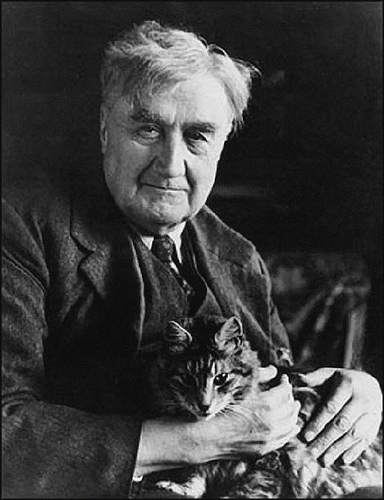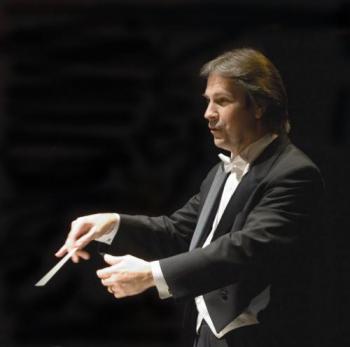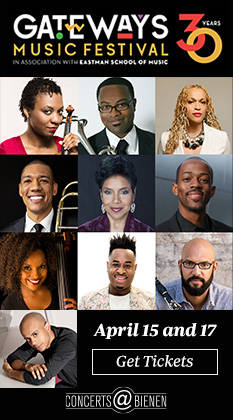Heatherington, Ars Viva make a brilliant case for rarely heard English symphony

Before the second half of Sunday’s season-opening concert for Ars Viva, Alan Heatherington was presented with the “Conductor of the Year” Award by the Illinois Council of Orchestras, the third time he has been so honored. Citing his work last season with both Ars Viva and the Lake Forest Symphony, the ICO honored the conductor for his innovative programming, personal involvement with the community and the high quality of his performances.
Heatherington then showed just why that award is so richly deserved leading the Ars Viva orchestra in a fresh and richly idiomatic performance of Ralph Vaughan Williams’ rarely heard Symphony No. 8.
Completed in 1955 and dedicated to Sir John Barbirolli who conducted the premiere, VW’s Eighth shows the octogenarian English composer in a playful mode, with no hint of routine and still setting himself new challenges. In addition to an array of percussion instruments—a much greater novelty in a symphony a half century ago than today—the orchestra is divided in the two interior movements, with the second movement scored entirely for winds and the third for strings alone.
Yet there is nothing calculated or gimmicky about the end result, which is a strong, characteristic and engaging work, filled with energy and bustle as well as the composer’s distinctive brand of nostalgic lyricism.

Heatherington is a consistently convincing hand in a wide degree of repertory but this crackling Vaughan Williams performance is one of the finest things he and Ars Viva have done in recent seasons. His clear, dexterously balanced textures allowed the ingenuity and ear-tickling timbres of the percussion brigade to make an impact without upstaging the larger symphonic argument, as the opening Fantasia leads to its resonant, warm-hearted climax.
The tick-tock rhythmic swagger of the ensuing Marcia was witty and dynamic with superb contributions from trumpeter David Inmon, flutist Lyon Leifer and oboist Stephen Colburn. The Cavatina plumbs a characteristic vein of English pastoral melancholy, aided here with an elegant and expressive violin solo by Sunday’s concertmaster Ilya Kaler. The performance was rounded off with a resounding rendition of the closing Toccata, brilliantly played by all with the acute balancing allowing the percussion to make its full kaleidoscopic impact.
This is a deceptively challenging work to bring off and Heatherington clearly has great sympathy and keen understanding of Vaughan Williams’ music to accomplish this so winningly. With Heatherington winding down his Sibelius cycle with Ars Viva, perhaps he might now consider embarking on a Vaughan Williams series. This repertory is greatly underplayed in Chicago and it would be wonderful if this terrific performance of the Eighth ushered in a complete cycle of VW symphonies in future Ars Viva seasons.
One may have to stop referring to Brahms’ Double Concerto as “rarely heard,” at least in Chicago. Sunday’s performance was the third in as many months with the work heard at both Grant Park and Ravinia this past summer.
Brahms’ last symphonic work, his concerto for violin and cello is also a tricky work to pull off successfully, due in part to the somewhat equivocal nature of the music as well as the challenge of balancing two soloists with contrasting temperaments and approaches.
Chicago Symphony Orchestra musicians may be on strike but two members were stage front Sunday in Brahms’ concerto (in addition to the scattered CSO players in the Ars Viva orchestra).
CSO assistant concertmaster (and Ars Viva concertmaster) David Taylor and cellist Richard Hirshl made a fine and simpatico duo. Hirschl’s opening cello statement deftly avoided inflating the initial solo to Tchaikovskian dimensions and Taylor likewise brought an apt sense of inward fantasy to his violin playing, fine foils for the taut urgency of the orchestra under Heatherington’s conducting.
There were fleeting moments of errant intonation from both soloists and the Andante proved a bit too cool and streamlined, wanting in passion. Still, this was a cohesive down-to-essentials performance that avoided the “hard sell” in favor of concentrating on the reflective nature of this late work. Apart from some raspy horn moments, the Ars Viva orchestra supported their two colleagues with polished and dramatic playing under Heatherington’s baton.
The concert began with a suite from Khachaturian’s Masquerade, incidental music the Armenian composer wrote for a once-popular play by Lermontov.
Despite its chamber-orchestra dimensions, Ars Viva produces a robust symphonic sound and its weighty textures were eminently well suited to Khachaturian’s brawny populist style. Heatherington led a brash and exuberant performance that managed—just—to skirt the music’s vulgarity, bringing martial swagger to the Waltz and frenzied satirical insistence to the concluding Galop. Concertmaster Kaler lent a welcome contrast with his gentle and restrained violin solo in the Nocturne.
Ars Viva’s next concert is 3 p.m. Nov. 4 at the North Shore Center for the Performing Arts in Skokie. The program will include Brahms’ Academic Festival Overture, Sibelius’s Symphony No. 4 and Shostakovich’s Symphony No. 9. arsviva.org
Posted in Uncategorized




